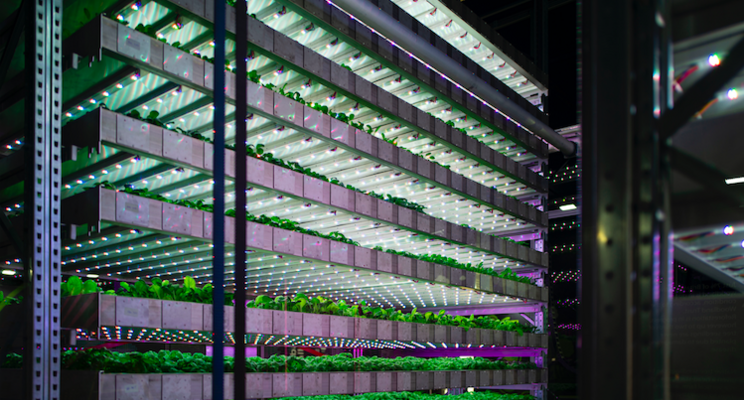Controlled indoor cultivation without daylight comes of age
Added on 14 December 2021

Vertical farming is an umbrella term for a method of growing in a variety of structures, such as empty buildings, specially constructed growth chambers or containers. The common characteristic is the closed nature of the system. This makes it possible to attune the conditions (light, climate, water, fertilizers) precisely to the needs of the crop. As a result, the crop grows evenly and can be planned. It is also possible to control the level of healthy nutrients in the crops.
"Vertical farming is still a specialised niche, but the potential is great. Interest is growing all over the world. Initially, there were some critical comments about its feasibility, but we have really moved beyond that phase. That is why we've honestly listed the pros and cons of vertical farming", says Sander van Delden, first author of the article in Nature Food.
The article was written at the journal's request. The Wageningen researchers involved many colleagues at home and abroad to produce a complete picture of all aspects of this growing method. This ranges from cultivation and technology to sustainability, health, social aspects and related policy.
Cultivation is possible everywhere
"It's a solution for high-quality local production of fresh fruit and vegetables, close to consumers in urban areas. It can be done anywhere, regardless of climate or soil type. Cities can become independent of production in other areas; that's useful as supply problems in times of crisis can cause dire situations. That scenario can be resolved with vertical farming", says Van Delden.
"Production and quality can be planned every day of the year. You have complete control, also over the nutrient content, although our understanding of this field still needs to grow", says co-author Leo Marcelis, Professor of Horticulture and Product Physiology at Wageningen University & Research.
"The system also has many sustainability benefits. Compared to all other methods of cultivation, the consumption of water and nutrients is low and it requires little space. In theory, you can grow without pesticides. On the other hand, the electricity consumption and the necessary investments are high."
Yet the high investments are not an obstacle at this stage. Large investors are queuing up. However, it is not only a question of technology and finance, both scientists emphasise. Only an interplay between crop experts, technicians, marketers and investors can take vertical farming to the next level. That is necessary and certainly possible.
Marcelis: "We are only at the beginning; there is still a lot of room for improvement. Growers will learn to get much more out of the cultivation system. Breeders are working on special varieties for this method of cultivation. At the moment, you mainly see lettuce varieties and herbs such as basil in daylightless cultivation, but in time you will certainly see tomatoes and strawberries as well. Technically, any crop can be grown, but I expect that it will remain difficult to make this kind of cultivation economically viable for bulk crops like cereals, rice, or cassava."
Healthy vegetables guaranteed
Van Delden sees many opportunities for improving the quality of fruit and vegetables: for instance, vitamins, antioxidants, flavourings or health-promoting substances. It is difficult to control quality in outdoor crops and greenhouses because of the ever-changing conditions. But in a vertical farm, it is always the same perfect spring weather.
Click here to read more.
Photo Credit: Intelligent Growth Solutions
Source: Urban Ag News
More news















